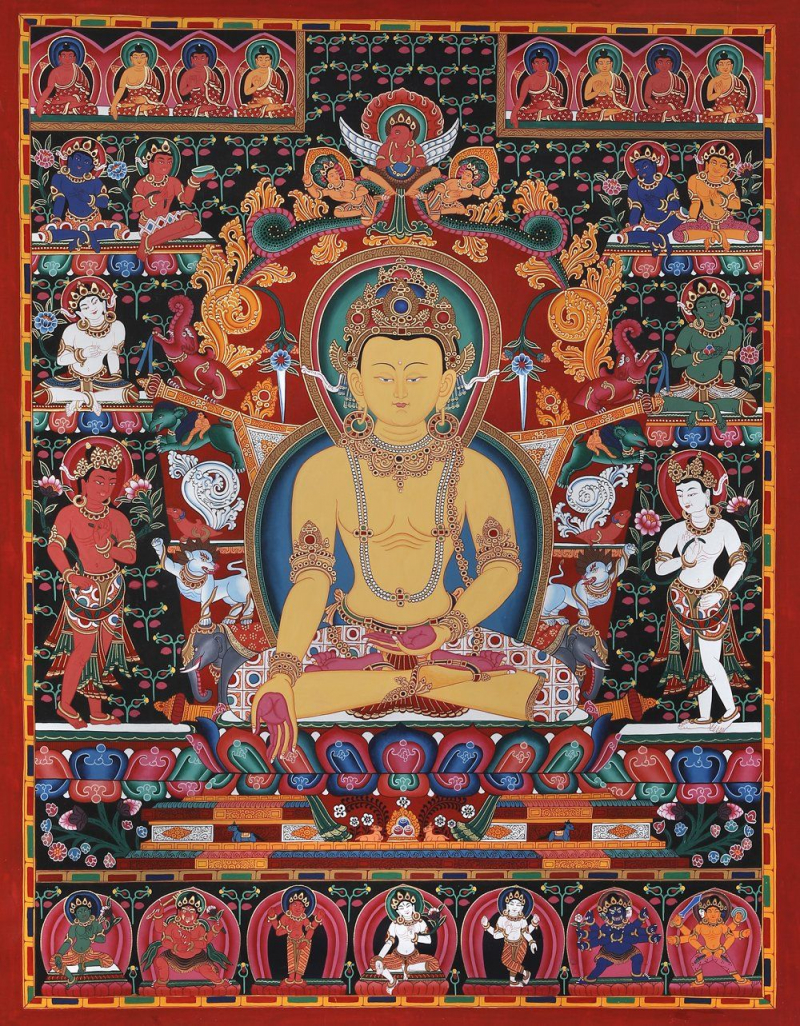Ratnasambhava

Ratnasambhava is a name of Majur (the embodiment of non-dual knowledge) and, along with other names, forms the core essence of the Majurnmasagti. The Nmamantrrthvalokin gives the practitioner a sdhana (a meditative practice') to turn these names into mantras. These mantras are chanted for the benefit of all beings and then placed and contemplated in the Vajradhtu-mahmaala, which is an extended version of the Vajradhtu-maala.
Ratnasambhava is one of the Dhyni-Buddhas in Vajrayana or Tantric Buddhism. The name Ratnasambhava (Tib. Rinchen Jungné) means "Source of Jewels" or "Unobstructed Accomplishment." He is the Ratna or Jewel family's Buddha and presides over the Buddha field known as rmat (Tib. Paldangdenpa), which translates as "Realm of Splendor" (or Magnificence) and is located to the south.
Ratnasambhava is frequently depicted with a cintmai (wish-fulfilling) jewel in his hand and his hand in the mudra of giving. He is described as a glowing yellow being who embodies wealth, generosity, and abundance. His mudr is varada, his vhana is a lion, and his symbol is a jewel. Vajradhtvivar is the name of his akti, or female counterpart (spiritual consort), and Ratnapi is the name of their Bodhisattva offspring.
Ratnasambhava is the embodiment of equality wisdom, transforming selfish pride into qualities of equality and equanimity. Rathnasambhava is associated with equanimity and equality. His mandalas and mantras aim to cultivate these qualities while removing greed and pride. Rathnasambhava, who is associated with feelings and senses and has a connection with consciousness, promotes Buddhism by perfecting knowledge.










